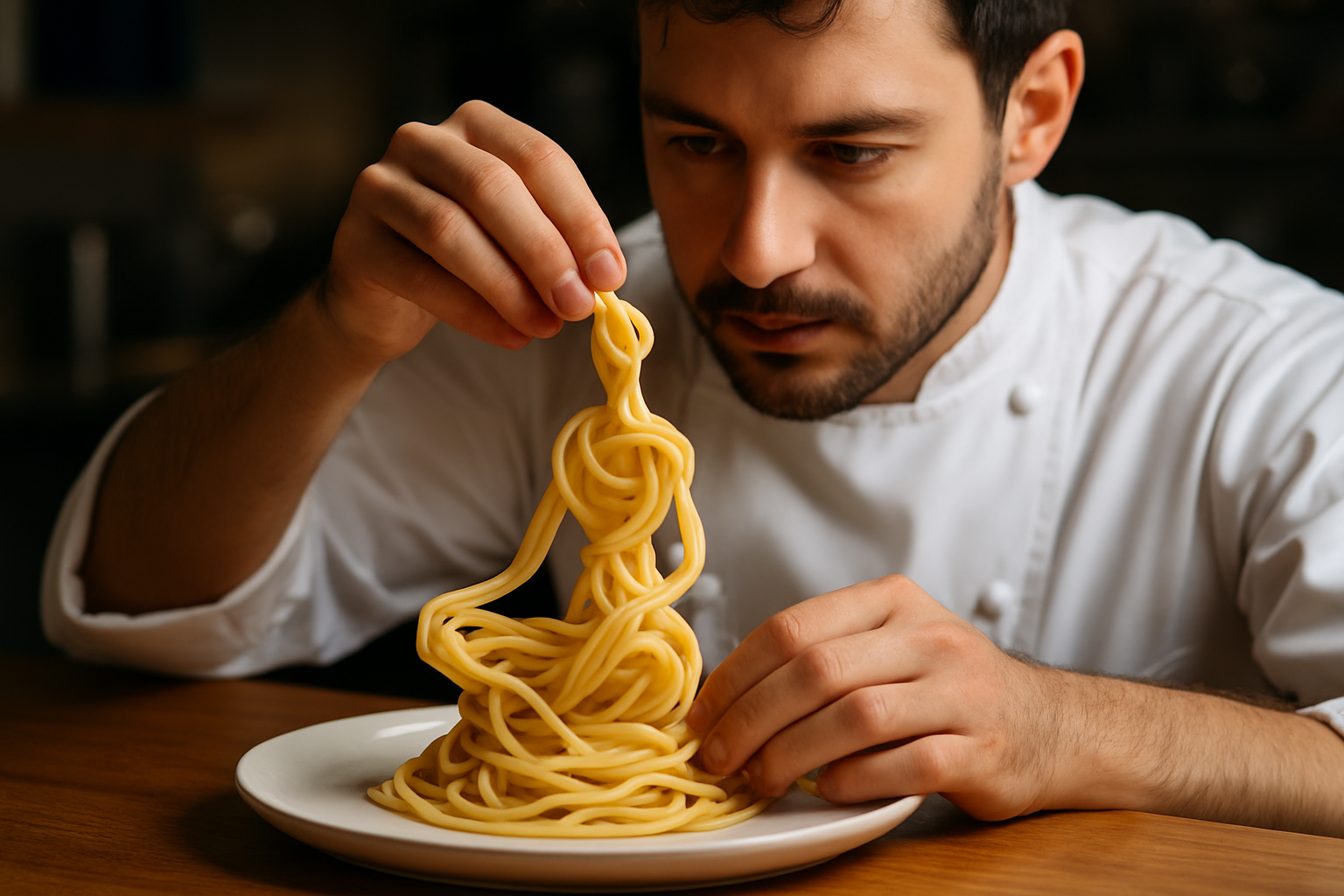The Culinary Canvas: Gastronomic Art's Digital Renaissance
In an era where the boundaries between art forms blur, a new creative revolution is taking place on our screens and plates. The fusion of culinary expertise and digital artistry has given birth to a movement that's captivating food enthusiasts and art aficionados alike. This phenomenon, dubbed 'digital gastronomy,' is transforming how we perceive, create, and consume food-related content. From mesmerizing food photography to virtual reality dining experiences, the culinary world is embracing technology to craft immersive, multi-sensory adventures that tantalize both the palate and the imagination.

The turning point came with the widespread adoption of smartphones and high-quality cameras, enabling chefs and food enthusiasts to share their creations with a global audience instantly. This democratization of food content creation paved the way for innovative approaches to culinary presentation and storytelling.
From Pixels to Palate: The Art of Food Photography
At the heart of digital gastronomy lies the art of food photography. No longer confined to the pages of glossy magazines, food imagery has become a powerful medium for self-expression and brand building. Professional food photographers and stylists work tirelessly to capture the perfect shot, employing techniques borrowed from traditional still life painting and modern digital editing.
The rise of platforms like Instagram has spawned a new generation of food influencers who have elevated food photography to an art form in its own right. These digital artists use carefully curated color palettes, innovative plating techniques, and strategic lighting to create images that are as visually appealing as they are appetite-inducing.
Virtual Reality: A Feast for the Senses
As virtual reality technology advances, it’s finding its way into the culinary world, offering unprecedented immersive experiences. Pioneering chefs and tech companies are collaborating to create virtual dining experiences that transport guests to exotic locations or fantastical worlds while they enjoy a meal.
These VR dining experiences go beyond mere visual stimulation. They incorporate carefully orchestrated scents, sounds, and even tactile elements to create a multi-sensory journey. Imagine savoring a seafood dish while virtually sitting on a Mediterranean beach, the sound of waves crashing in your ears and the scent of salt in the air – all from the comfort of a restaurant or your own home.
AI in the Kitchen: The Next Frontier of Culinary Creativity
Artificial Intelligence is making significant inroads into the world of gastronomy, revolutionizing both the creative and practical aspects of cooking. AI-powered apps and platforms are now capable of generating unique recipes based on available ingredients, dietary restrictions, and flavor preferences. These systems learn from vast databases of recipes and culinary traditions, combining this knowledge in novel ways to suggest innovative dish ideas.
Moreover, AI is being used to optimize kitchen operations, predict food trends, and even assist in menu planning for restaurants. Some forward-thinking establishments are even experimenting with AI-driven robotic chefs, capable of preparing complex dishes with precision and consistency.
The Ethics and Implications of Digital Gastronomy
As with any technological revolution, the rise of digital gastronomy raises important questions about authenticity, creativity, and the future of culinary arts. Critics argue that the emphasis on visual appeal in food photography can lead to dishes that prioritize aesthetics over taste. There are also concerns about the potential loss of traditional culinary skills as more processes become automated or digitized.
However, proponents of digital gastronomy argue that these technologies are tools that enhance, rather than replace, human creativity. They point to the democratization of culinary knowledge and the unprecedented opportunities for global culinary exchange facilitated by digital platforms.
The Future of Flavor: Where Art Meets Algorithm
As we look to the future, the intersection of culinary arts and digital technology promises even more exciting developments. From personalized nutrition plans generated by AI to augmented reality cooking tutorials, the possibilities are boundless.
One particularly intriguing area of research is the development of digital taste simulation. Scientists are working on devices that can recreate taste sensations electronically, potentially allowing for entirely new ways of experiencing flavor without consuming actual food.
The digital gastronomy movement is also pushing the boundaries of what we consider food. 3D-printed meals, edible packaging, and lab-grown meats are just a few examples of how technology is reshaping our relationship with food at a fundamental level.
A New Recipe for Culinary Creativity
Digital gastronomy represents a fascinating convergence of art, science, and technology. It’s a movement that honors culinary traditions while embracing the possibilities of the digital age. As chefs, artists, and technologists continue to collaborate and innovate, we can expect to see even more groundbreaking developments in how we create, share, and experience food.
This digital renaissance in the culinary world is not just changing how we eat; it’s transforming how we think about food, creativity, and the very nature of sensory experiences. As we stand on the brink of this new era, one thing is clear: the future of gastronomy will be as much about pixels and code as it is about pots and pans. The culinary canvas has expanded, and the possibilities are limitless.





